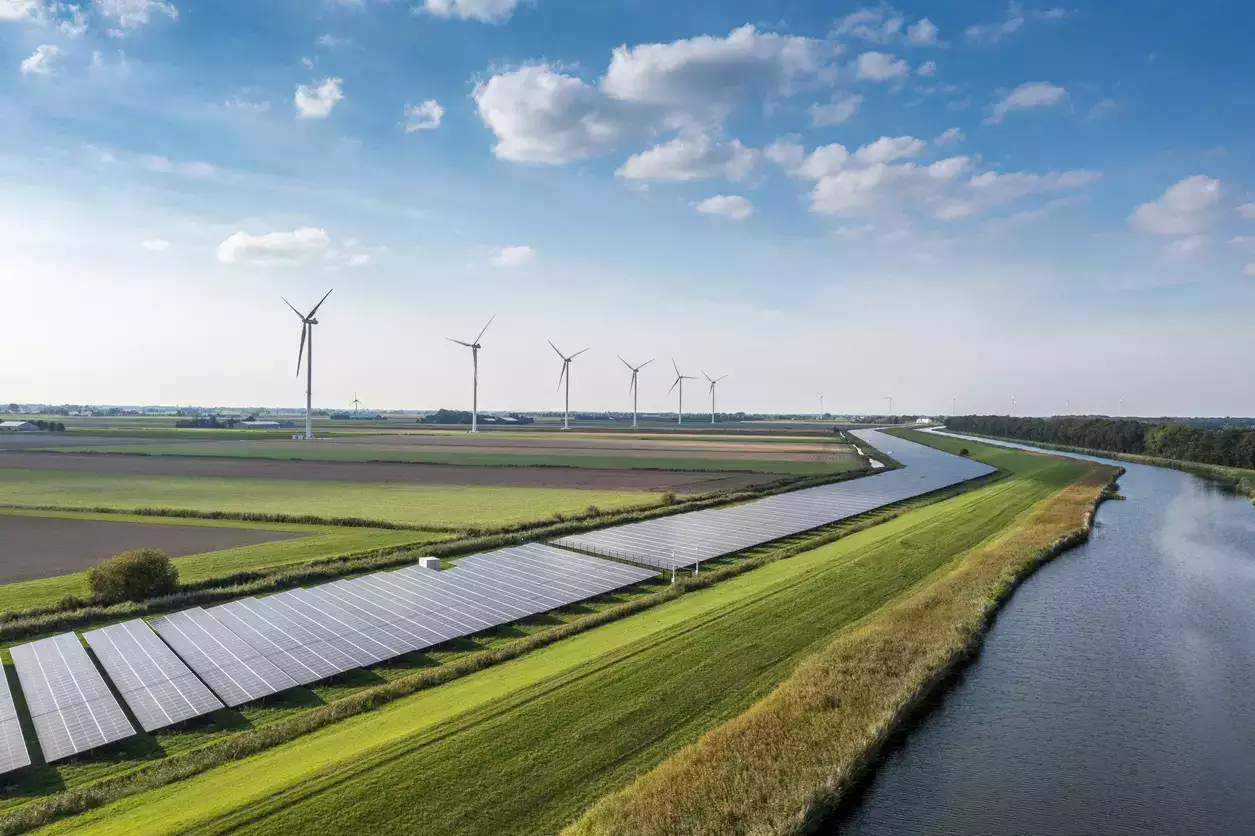Global clean energy tech market to reach USD 2 trillion by 2035, driven by major investments

As per current policy settings, the global market for the top six mass-manufactured clean energy technologies is set to rise from USD 700 billion in 2023 to more than USD 2 trillion by 2035. This valuation is expected to be near the value of the world’s crude oil market in recent years, stated Energy Technology Perspectives 2024 (ETP-2024), the latest installment of the IEA’s flagship technology publication.
The report delves extensively into the complex interplay between energy, industrial, and trade policies, which can help countries secure supply chains and economic opportunities.
The top six mass-manufactured clean energy technologies comprise solar PV, wind turbines, electric cars, batteries, electrolysers, and heat pumps.
Trade in cleaner technologies
Cleaner technologies are also anticipated to have swift growth. Within a decade it is expected to more than triple and reach USD 575 billion. This is 50% larger than the global trade in natural gas today.
“The market for clean technologies is set to multiply in value in the coming decade, increasingly catching up with the markets for fossil fuels. As countries seek to define their role in the new energy economy, three vital policy areas – energy, industry, and trade – are becoming more and more interlinked. While this leaves governments with tough and complicated decisions ahead, this groundbreaking new IEA report provides a strong, data-driven foundation for their decisions,” said IEA Executive Director Fatih Birol.
The investment in clean technologies is mostly concentrated in countries that have a strong presence and are ready to build their presence such as the European Union, China, the United States, and India.
As per the policy settings, the clean technology exports are up to date surpassing USD 340 billion in 2035, which is approximately equivalent to the projected oil export revenue this year of Saudi Arabia and the United Arab Emirates combined.
“However, despite the strong impact of the Inflation Reduction Act and Bipartisan Infrastructure Law in the United States, the EU’s Net-Zero Industry Act, and India’s Production Linked Incentive Scheme, China is set to remain the world’s manufacturing powerhouse for the foreseeable future,” the report stated.
India creating its presence
India has launched several policies to minimise import dependence, promote domestic manufacturing, and have export-led growth across sectors. This is to create a strong and emerging presence in sectors such as Solar PV, EVs and batteries, electrolysers, and materials.
Manufacturing capacity for solar PV is expected to rise over the next decade to meet the emerging deployment, driven by strong policy support, stated the report.
The demand for materials in the country is observing a growth recently, that is promoted through economic growth and industrialisation.
The electrolyser manufacturing capacity is expected to be more than 12 GW by 2030, though less than 10% of more than 11 GW of planned additions have reached FID, the company stated.
Top six manufacturing sectors and their driving demand
The demand for each sector/material is driven by macroeconomic drivers, including population and the value added of relevant economic subsectors, and integrates the impact of material efficiency measures derived from the GEC Model (IEA, 2024b).
Batteries and electric cars: The demand is fuelled mainly by electric cars (over 70% of global demand for all years and scenarios considered), for which BEV production is modelled explicitly in the MaT Model and PHEV production considered 2023 trade patterns, and BEV results.
The reports stated that this assumption holds for the major markets such as China, India, and Southeast Asia, which account for over 75% of global demand for all years and scenarios considered.
The demand for e-cars is aligned with regional new electric car sales for the same year.
Solar PV: “The demand per modelling region for solar PV modules in each year corresponds to the average annual PV capacity additions between that same year and the following one, as a way to simulate time spent in stocks between production and use,” stated the report.
It is expected that the demand per modelling region for the immediate upstream component, solar PV cells, corresponds to the production of solar modules in the region within the same year.
Wind: IEA reports further state the demand per modelling region for any given year for all the wind components – nacelles, blades, and towers – corresponds to the average annual wind capacity additions (i.e. installations) between the same year and the following one. ‘This is a way to compensate for the fact that construction of a wind farm can take place over several years.”
Electrolysers and heat pumps: The demand for electrolysers is aligned with electrolysis plant installations in the same year. For heat pumps, the demand corresponds to heat pump sales and installations in the same year measured in GW.
Materials: The report stated that demand for steel and aluminum aligns with the demand for semi-finished steel and aluminum, measured in Mt. While for fertilisers is a composite of demand for different fertiliser types (see Scope section above) to allow for production and trade to be modelled.
The demand for ammonia is accelerated via existing applications, is partially endogenously determined by where fertilisers are produced, and partially exogenously determined when used for other industrial applications, the report stated.

